Astronomical Myths: Separating Fact from Fiction!
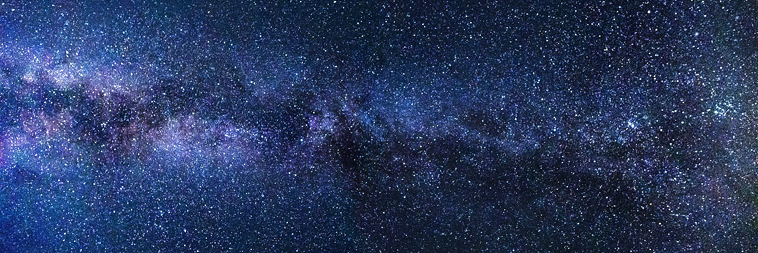
In this article, we’ll separate fact from fiction, providing you with scientific evidence and observations to dispel common astronomical myths!
Have you ever looked up at the night sky and wondered if everything you’ve ever heard about astronomy is true? Well, it’s time to set the record straight and debunk some of the most prevalent astronomical myths that have persisted over the years! Get ready to explore the fascinating world of astronomy and uncover the truth behind these celestial myths.
Astronomical Myths – No. 1: The Sun Is Not a Star

One of the most persistent and widely held astronomical myths is the misconception that the Sun is not a star. However, the truth is quite the opposite and far more fascinating. Our beloved Sun is, in fact, a star—a colossal, luminous sphere composed primarily of hydrogen and helium gases. Its immense gravitational pull generates tremendous pressure, resulting in the nuclear fusion that provides the heat and energy that sustains our entire solar system.
Belonging to the class of G-type main-sequence stars, the Sun is just one of billions of stars in the Milky Way galaxy, each with unique characteristics and celestial wonders. So, the next time you find yourself gazing at the daytime sky, take a moment to appreciate that you are beholding a star similar in essence to those that twinkle and illuminate the night sky.
Astronomical Myths – No. 2: Meteor, Meteoroid, and Meteorite Are Interchangeable Terms
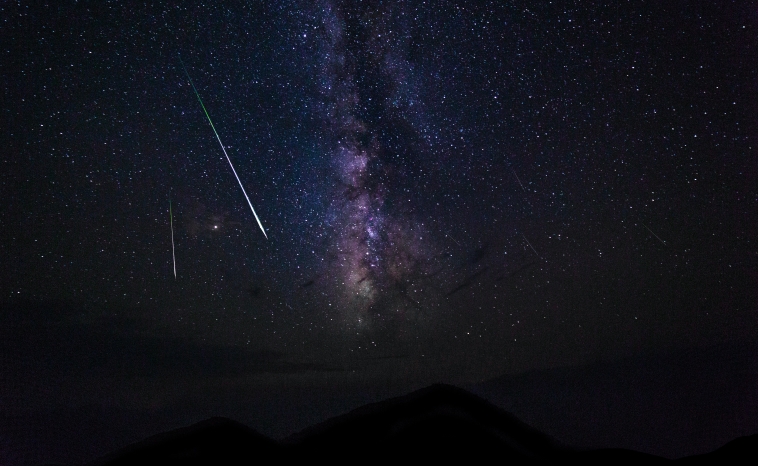
Another common misconception in astronomy revolves around the terms “meteor”, “meteoroid”, and “meteorite”. Rather than being different ways of describing the same thing, these three words describe different stages of cosmic debris entering Earth’s atmosphere.
A meteoroid is a small solid object, typically a fragment of a comet or asteroid, that is travelling through space. When a meteoroid enters Earth’s atmosphere, it encounters friction and begins to heat up, creating a glowing streak of light known as a meteor. This phenomenon occurs due to the rapid compression and heating of the air in front of the meteoroid.
Most meteors burn up entirely in the atmosphere and never reach the Earth’s surface. However, if any part of it survives the fiery descent and lands on Earth’s surface, it becomes a meteorite. Meteorites can provide valuable insights into the composition and origin of our Solar System.
Understanding the distinction between these terms not only helps debunk common misconceptions but also allows us to appreciate the fascinating journey of these cosmic travellers and the scientific knowledge they can offer us.
Astronomical Myths – No. 3: Earth’s Moon Has No Gravity

Contrary to popular belief, the Moon does indeed have gravity. Although its gravitational pull is far weaker than Earth’s, it still significantly influences our planet’s tides. The Moon’s gravitational force interacts with the Earth’s oceans, causing the rise and fall of water levels, resulting in the ebb and flow we witness on a daily basis.
This gravitational dance not only enhances the beauty of the night sky but also serves as a remarkable demonstration of the interconnectedness of celestial bodies and their impact on our world. So, the next time you find yourself gazing at the Moon, take a moment to appreciate the intricate role its gravity plays in the dynamic rhythm of life on Earth.
Astronomical Myths – No. 4: Stars Twinkle Due to Their Brightness

The twinkling of stars in the night sky has long captivated our imagination. However, the common belief that stars twinkle solely due to their brightness is not entirely accurate. Stars appear to twinkle because of the Earth’s atmosphere, but let’s dive a little deeper into the science behind it.
As starlight passes through our planet’s turbulent air, it encounters pockets of varying temperature and density. These fluctuations cause the starlight to refract, or bend, ever so slightly. This bending effect creates the twinkling or scintillation that we observe from Earth. The light from stars travels across unimaginable distances through the vast expanse of space. Yet, it’s the final leg of its journey through our atmosphere that gives it that whimsical dance.
Astronomical Myths – No. 5: The Sun is Yellow

While many of us have grown up drawing a bright yellow sun in the corner of our childhood artworks, the truth is that the Sun’s colour is actually white. Due to atmospheric scattering and absorption, we perceive it as warm yellow when looking at it from the Earth’s surface, creating a sense of familiarity and comfort.
However, astronauts in space, or those who witness a solar eclipse, will tell you that the Sun is, in fact, a bright white ball of light, radiating its brilliance across the vast expanse of the universe. Its luminosity is so intense that it illuminates the entire solar system, providing life-giving energy to all the planets, including our own.
Astronomical Myths – No. 6: The Moon Has a Dark Side
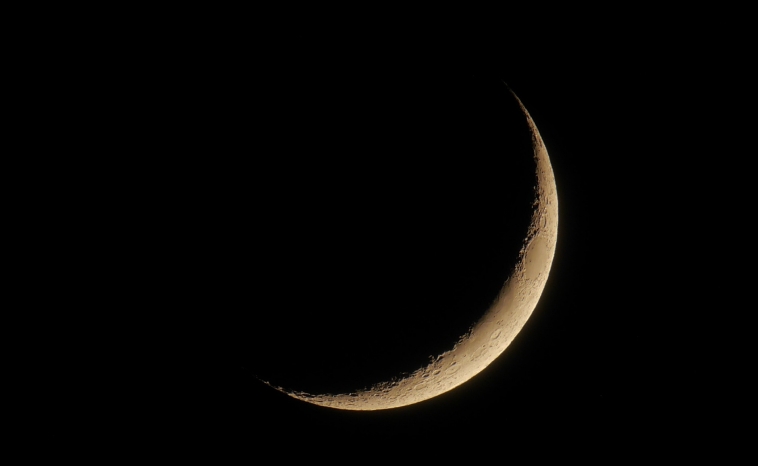
The iconic Pink Floyd album “Dark Side of the Moon” may lead us to believe that the Moon has a permanently dark side. However, in reality, it doesn’t. The Moon rotates on its axis at the same rate as it orbits around Earth, causing one side to always face towards us. This phenomenon is known as synchronous rotation and is why we can only see one side of the Moon from Earth.
But here’s an interesting fact: while one side of the Moon is perpetually facing Earth, the other side, often referred to as the “far side” or “dark side” of the Moon, is not always completely dark. Due to variations in the Moon’s topography and the angle of the Sun’s rays, certain areas on the “far side” can still receive sunlight and experience periods of illumination. This means that even though we can’t see it from Earth, the “dark side” of the Moon is not always in complete darkness.
So, while the Moon may have a side that is unseen from our perspective, it’s important to remember that both sides of the Moon receive equal amounts of sunlight over time. It’s just a matter of our vantage point and the fascinating phenomenon of synchronous rotation that makes us perceive one side as the “dark side” of the Moon.
Astronomical Myths – No. 7: The Big Dipper Is a Constellation
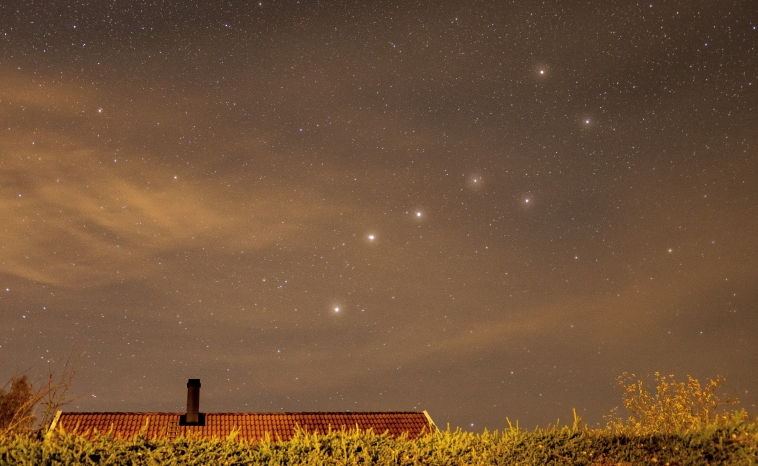
The seven bright stars that form the famous asterism known as the Big Dipper are often mistaken for a stand-alone constellation. However, the Big Dipper is just a small part of the larger constellation Ursa Major.
Constellations, composed of stars that create patterns in the sky, represent fascinating celestial entities. In the vast expanse of the night sky, there exist 88 officially recognised constellations, each with its own unique story and significance. Hence, while we commonly use the term “constellation” to refer to groups of stars, it is crucial to acknowledge that they are not isolated entities but rather interconnected components of a grand cosmic tapestry.
Astronomical Myths – No. 8: The North Star Is the Brightest Star in the Sky

Many people believe the North Star, also known as Polaris, is the brightest star in the night sky. However, this is not entirely true. While it may appear bright to us due to its prominent position, and it certainly has significance for navigation purposes, numerous stars outshine Polaris in terms of brightness. In fact, Polaris ranks as the 50th brightest star in the night sky, which might come as a surprise!
Polaris stands out to us not solely because of its brightness but rather its unique location almost directly above Earth’s North Pole. This positioning makes Polaris appear stationary while other stars seem to revolve around it due to Earth’s rotation. This intriguing phenomenon has captivated astronomers and skywatchers alike, adding to the allure and fascination of the night sky.
Astronomical Myths – No. 9: The Big Bang Was an Explosion
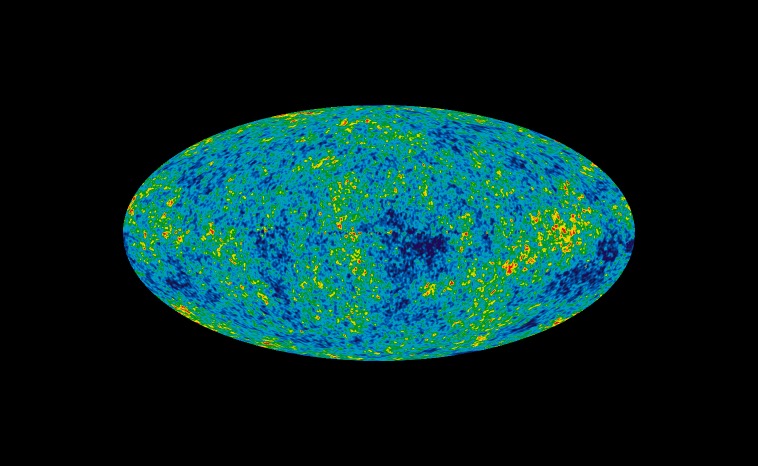
Credit: NASA / WMAP Science Team
The Big Bang theory, widely accepted in scientific circles, posits that the universe originated from a single, unimaginably dense, hot point approximately 14 billion years ago. However, it’s important to clarify that this theory does not describe an explosive event akin to a bomb detonation, as commonly misconceived. Instead, the Big Bang can be better understood as a rapid expansion of the fabric of space itself.
As space expanded, the universe underwent a profound transformation, gradually cooling and giving rise to the formation of galaxies, stars, and planets. Though the Big Bang certainly involved an immense release of energy, it was fundamentally distinct from the conventional notion of an explosion.
Astronomical Myths – No. 10: Space Is Completely Silent

While the vacuum of space may not transmit sound waves as we know them on Earth, it’s not entirely silent. In fact, various forms of electromagnetic radiation, such as radio waves and microwaves, can be detected in space. These signals can be heard through devices like radio telescopes or converted into audible sounds by scientists.
Additionally, several spacecraft have captured sounds of solar winds, pulsar emissions, and other phenomena in space. So, while it may not be filled with the familiar sounds we hear on Earth, space is certainly not silent.
Applying Scientific Knowledge to Daily Life
Debunking astronomical myths enhances our understanding of the vast and mysterious universe and holds practical implications for our daily lives. By carefully separating fact from fiction, we can make well-informed decisions about stargazing and space travel and even ponder our place in the cosmos. Armed with scientific knowledge and a thirst for exploration, we can truly appreciate the true wonders of astronomy.
Furthermore, delving deeper into the realm of astronomical knowledge allows us to unravel the intricacies of celestial bodies, such as galaxies, stars, and planets, and understand their formation, evolution, and interactions. Exploring the fascinating phenomena of black holes, supernovae, and pulsars, among others, unveils the secrets of the universe’s most potent forces, captivating our imagination and expanding our horizons.
Moreover, gaining a comprehensive understanding of astronomy enables us to appreciate the interconnectedness of cosmic events and their impact on our own planet. From the role of solar flares in space weather and its influence on Earth’s magnetic field to the study of exoplanets and their potential for hosting life, the pursuit of astronomical knowledge has far-reaching implications for fields such as climate science, astrophysics, and astrobiology.
By immersing ourselves in the wonders of the cosmos, we cultivate a sense of curiosity and awe and foster a deep appreciation for the delicate balance that sustains life on Earth. It inspires us to protect and preserve our planet, recognising the fragility of our existence in the vastness of space. Moreover, the knowledge gained from debunking astronomical myths empowers us to confidently share accurate and captivating information with others, igniting their sense of curiosity and wonder.
One Million Stars
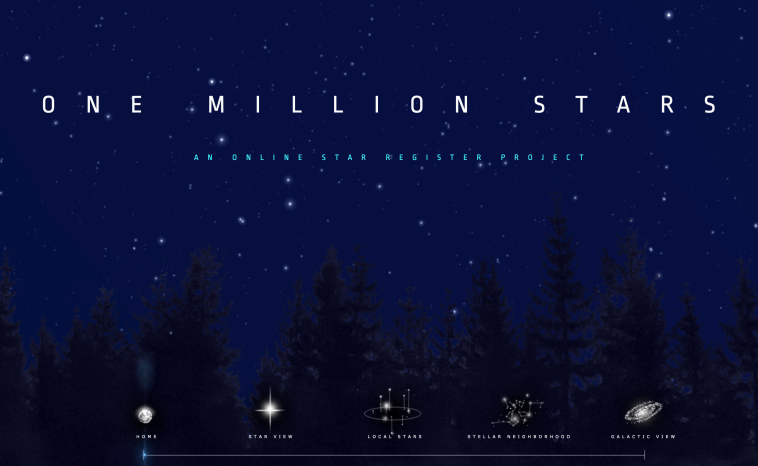
As we conclude our journey through the realm of astronomical myths, we hope you now have a clearer understanding of the truth behind these misconceptions. From debunking the notion that the Sun isn’t a star to clarifying the distinctions between meteors, meteoroids, and meteorites, we’ve unveiled the fascinating realities of our universe. Remember to share your newfound knowledge and encourage others to explore the wonders of astronomy with an open mind!
Ready to delve deeper into the star-studded mysteries of the universe? Embark on your own celestial adventure with the OSR’s One Million Stars app. This user-friendly app allows you to navigate a realistic 3D model of our Milky Way Galaxy, revealing the locations and fascinating details of over one million stars. It’s an interactive cosmos at your fingertips, a perfect companion for your astronomical explorations. Start your journey today, and let’s explore the cosmos together. The universe is calling you!

